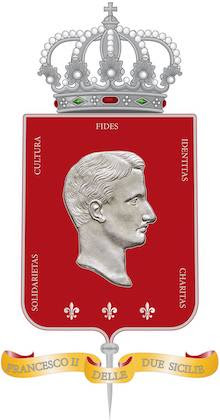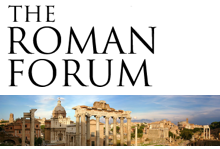 |
| Fountain pens and leather-bound journals |
“The reactionary is not a nostalgic dreamer of a canceled past, but rather a hunter of sacred shades upon the eternal hills.” ~ Nicolás Gómez Dávila [1]
These past fifteen years of blogging have been very rewarding, to say the least. I learned a lot and had fun doing it. Not normally an impulsive person, I jumped in with very little forethought and planning, but we quickly found our niche. All I knew was that I was tired of the same old boring Italian American narratives being peddled at the time and wanted to create something more relatable and interesting (at least to me). [2]
I won’t deny there have been times I thought of quitting, but they were fleeting and quickly dismissed. To be sure, this was never because I was discouraged, doubted our cause, or had nothing to say; it was because I was physically exhausted (I sometimes suffer from insomnia) and felt it hampered my ability to competently do the job at hand. A day will come when I hang up my virtual inkwell, but God willing it won’t be any time soon.
Instead of our usual anniversary address about the previous year (it was great, by the way) or our plans for the future (as always, we plan to conquer the world), I thought we’d change things up and answer a few frequently asked questions.
What is Neobourbonism?
Neobourbonism (Neoborbonismo), a response to the inadequacy of meridionalismo, the study and research of the economic and social issues of Southern Italy, means different things to different people. For some, it is simply “nostalgia for the Kingdom of the Two Sicilies.” For others, like myself, it not only stands for the restoration of the old kingdom and the Neapolitan Bourbons but is also an aristocratic ideal to aspire to, even if the Kings were never to return to the throne.
Perfectly accordant with my reactionary (i.e., counter-revolutionary) belief system, legitimate Neobourbonism embraces the traditional principles of authority, hierarchy, and faith. Standing in stark contrast to the irreligious material consumerism of the modern era (Mammonism), it strives to recreate the traditional organic state free from liberal and democratic decadence. Looking to revitalize the aristocratic principle and restore spiritual authority to its rightful prominence, the wretches in politics and finance will be brought to heel.
To be sure, there are those who try to hijack the movement and co-opt its symbols and talking points to promote their own incompatible and pernicious ideologies. For instance, I’ve actually met so-called Marxist Neobourbons!?! One such confused individual even had the insignia of the Illustrious Royal Order of Saint Janauarius (Insigne Reale Ordine di San Gennaro) tattooed on his chest.
Except for maybe the symbols of the Faith, there is nothing more perplexing than seeing godless communists in the trappings of one of the most reactionary Catholic dynasties.
Do you really believe in Southern Italian independence?
Yes, I do. However, only if it's going to be a truly sovereign state. A secular liberal-democratic “Republic of the Two Sicilies” has absolutely no appeal to me whatsoever. It would be purposeless to break away if it’s just going to be another socialist EU puppet state, only smaller. The one advantage I can see to this is maybe it would be easier to take back the reigns of power and reinstate the monarchy. Unless a stepping stone toward that goal, what would be the point?
Are you an academic? What are your qualifications and fields of expertise?
I am no academic, and considering the wretched state of academia today, this is a point of pride. I don't need or want validation from the academe. I am an autodidact and a dilettante. I immerse myself in books and art, visit libraries and museums, and attend readings and lectures whenever possible. With a background in fine arts, I studied painting, drawing and various other mediums for several years but withdrew because I despised the atmosphere. Let us just say that I did not see eye to eye with my instructors or fellow “artists.” Wholly disenchanted with the progressive art world, I regrettably chose to focus my attention on the female anatomy instead of my craft.
 |
| I still have a few of my old anatomy books from school |
As for the blog, we don’t claim to speak for anyone but ourselves. Nothing we publish here should be considered the final word on any given topic. Although confident in our cause, we are still not arrogant enough to believe we are not without faults and shortcomings or have room to grow. Readers are encouraged to delve deeper and research on their own and come to their own educated conclusions.
The blog format and the complexity of the subject matter (as well as my limited, sometimes “pedantic,” writing style) make it difficult to neatly wrap things up in a few paragraphs. Plus, ideas develop and opinions change over time, and we continually grow and acquire knowledge. The most obvious example of this is I no longer believe there is a political solution for the crisis of modernity. We need to bypass politics altogether and focus on creating a spiritually ardent new order that will implement the changes necessary to reverse the devolution of the Western World.
How did a third-generation Italian American become a Neobourbon counter-revolutionary?
I was born and raised in Brooklyn, New York, at a time when the borough still had a substantial and semi-cohesive Southern Italian population. Anything but a monolithic community, people of all stripes could be found, including (hold on to your seat) Fascists. Unlike overemotional leftists, I don’t mean this as a pejorative term for anyone right of Mao, I mean actual Fascist apologists. It was a way more intriguing time, where even misguided leftists (which, in my humble opinion, includes the Fascists) were sometimes interesting and, on rare occasions, more intellectually honest than today’s woke progressive ideologues. People were actually able to debate and hold conversations without melting down because someone held a different opinion. Doxing and cancel culture hadn’t yet reached the perverse levels it currently enjoys.
Naturally, my story begins with my beloved parents, grandparents and maternal great-grandparents (I was lucky enough to have known them). Passing on tradition, they instilled in me a healthy appreciation for the arts, literature and our ethnocultural heritage. Apolitical, they taught me to never trust the government or believe in democracy. Working class, they were socially conservative, patriotic, and upheld higher principles and traditional codes of honor and values. They taught me to be chivalrous, honest, hard-working and God-fearing. Sadly, I failed to live up to their high standards more times than I like to admit, especially during my rebellious and headstrong adolescent years.
This already durable foundation was later reinforced by my consumption of books, art and Classical music. Countless medieval romances, epic poems, and heroic sagas, not to mention theological, philosophical and historical works, captured my imagination and bolstered the aristocratic and religious principles I was raised to hold dear. Almost an embarrassment of riches, there is an inexhaustible trove of European high culture to lose oneself in, if one so wishes. Is it any wonder they want to do away with the Western Canon?
Unsurprisingly, even the pulp fiction and fantasy I read played a role. I was drawn to characters like Conan the Barbarian (Robert E. Howard), Kull of Atlantis (ibid), and John Carter of Mars (Edgar Rice Burroughs). Personifying virility, martial prowess, and heroism, these mighty conquerors won through strength of arms and daring glimmering thrones for themselves. Heck, even Tarzan of the Apes (ibid) was lord of the jungle. Throw in the Greco-Roman myths and legends, The Hobbit and Lord of the Rings trilogy (J.R.R. Tolkien), Beowulf (anonymous), and The Divine Comedy (Dante Alighieri) for good measure and you're almost assured to foster a little reactionary. Looking back, how could one not be a monarchist?
Unafraid to explore works seemingly at odds with my worldview, I put myself to the test and (I believe) came out stronger for it. For example, just because I read Marx, Gramsci and Sorel, that didn’t make me a Marxist, socialist, or a syndicalist. If anything, it has ensured that I am not. Likewise, just because I read Kremmerz that didn’t make me a hermeticist; Gentile, a Fascist; Marinetti, a futurist; de Sade, a sadist; and so on and so forth. All those thinkers and others way more “controversial” and “dangerous” have contributed to my development.
 |
| Some old issues of Nazione Napoletana and L'Alfiere |
My discovery of Neobourbonism in the mid-1990s was a thunderclap from above. It was the perfect response to the prevalent anti-Duosiciliano bigotry I experienced from non-Italians and “Padanian American” leghisti. Yes, believe it or not, Lega Nord sympathizers (though rare) were once a thing in New York City.
Similar to when I discovered the Traditional Latin Mass, I immediately felt at home and started participating whenever possible. Wanting to learn more, I scoured the web and bookshops for information and thrashed out talking points with anyone willing to discuss.
A pan-monarchist, I support all Catholic legitimist movements. However, I admittedly have a lot more to learn about the disputes over the rights of succession of the various royal claimants. Due to my Southern Italian ancestry, I have a special devotion to the Kingdom of the Two Sicilies, the land of my forefathers.
You can’t be serious?
I’m not blind, I am well aware of how unpopular and misunderstood these convictions are to the modern Duosiciliano American mindset, even to my own family members who had the same background and experiences growing up. Not one to conform to the herd mentality, I refuse to “get with the times,” abandon tradition, or submit to the apathy and nihilism besetting Western man. Doing my best to stand firm against the corrupting tide of modernity, my love of God and filial respect for my ancestors is the driving force behind my reactionary stance. I assure you, this is no game and I am quite serious. My friends don't call me the "Serious Man" for nothing.
~ Giovanni di Napoli, March 21st, The Feasts of Bl. Maria Candida of the Eucharist and San Benedetto da Nursia
Notes
[1] Scholia To An Implicit Text by Nicolás Gómez-Dávila, Bilingual Selected Edition, Villegas Editores, 2013, p. 265
[2] When founding the blog, I was enthralled with the writings of German Conservative Revolutionaries and Grécistes, which is why the original title was Magna GRECE.




















































